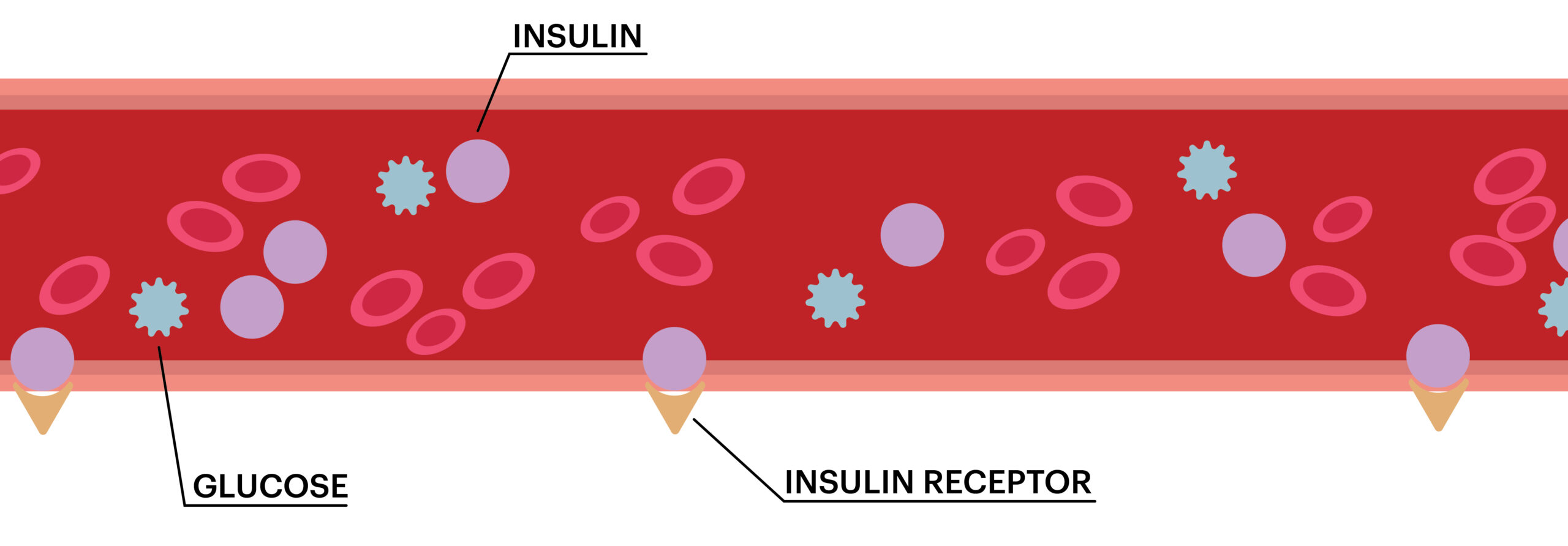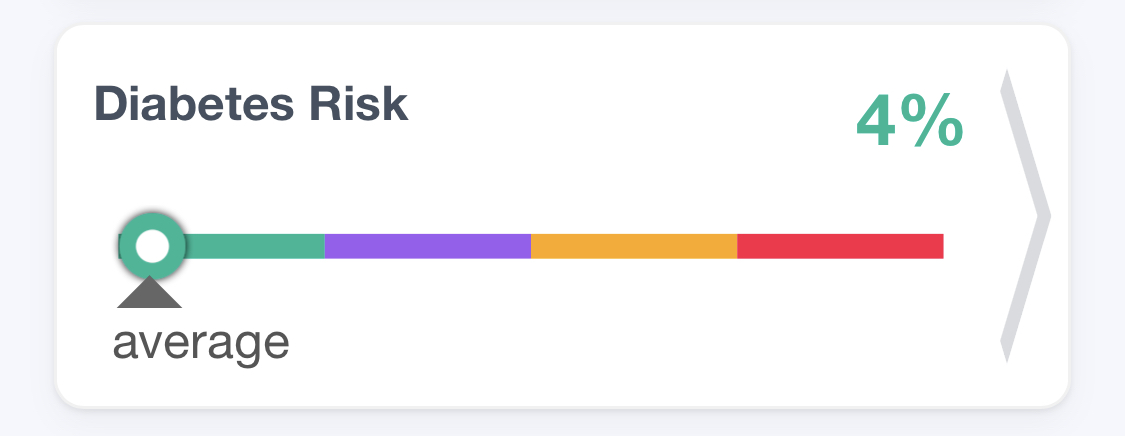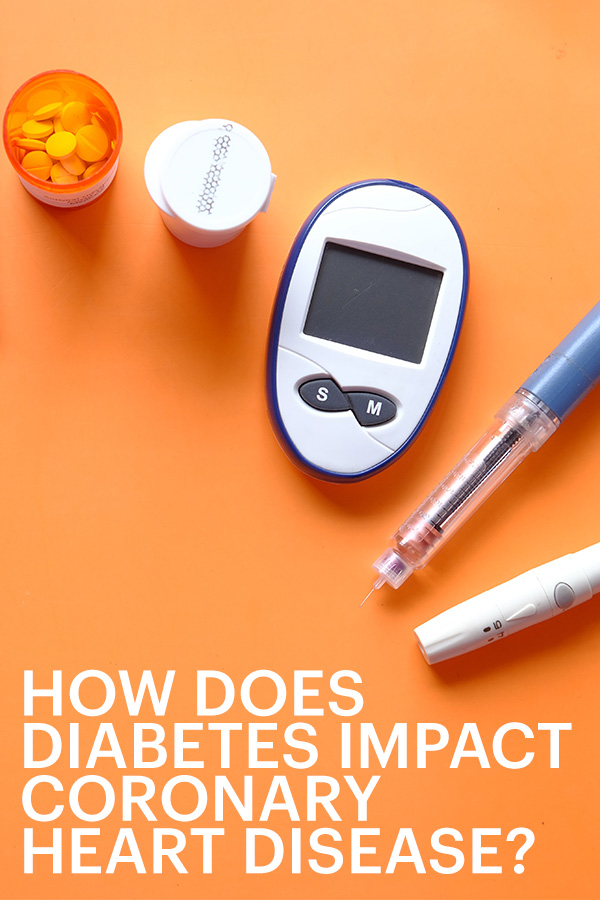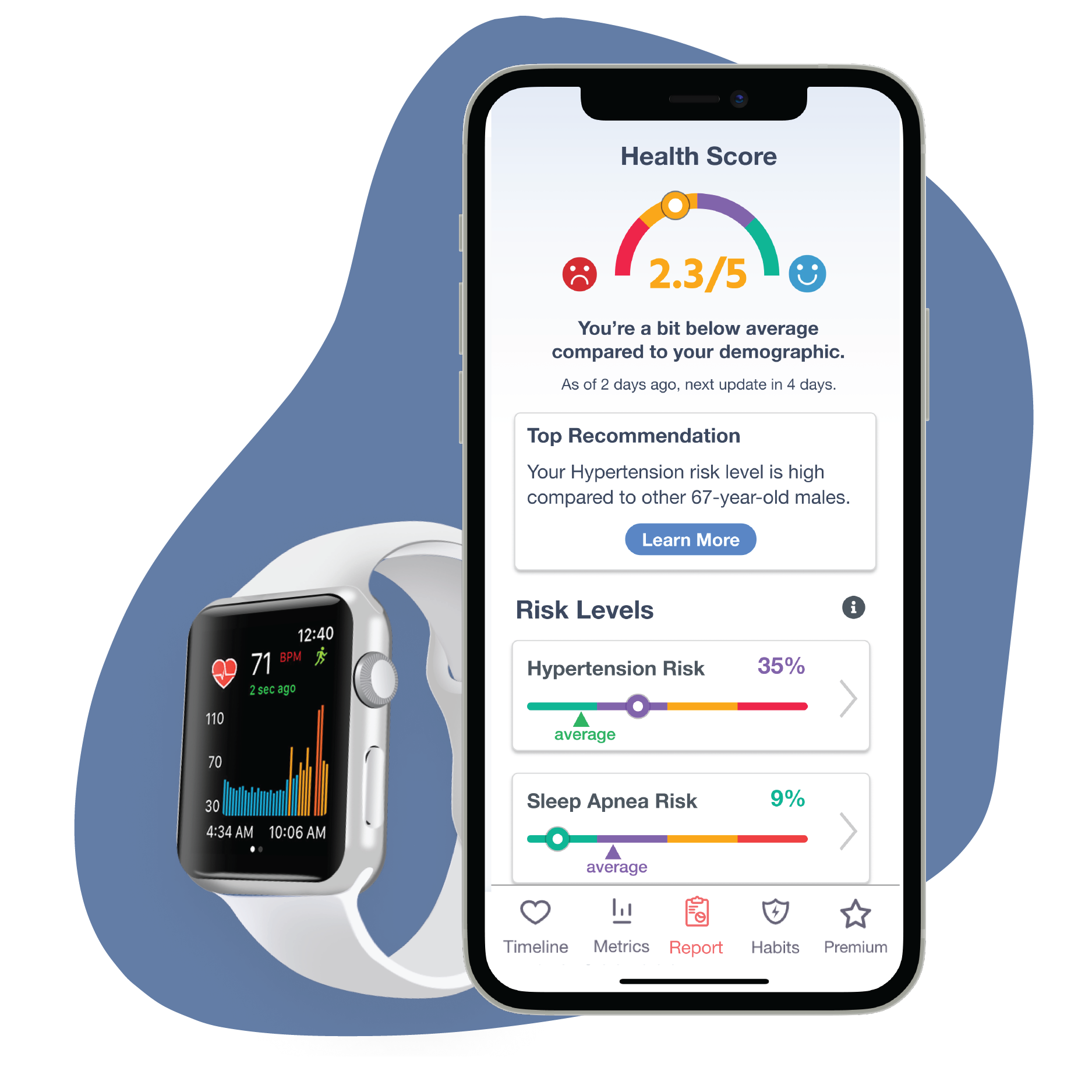Diabetes mellitus is a chronic condition that affects people of all ages. The main characteristic of this disease is having too much sugar (or glucose) in the blood. After we eat, food is usually broken down into glucose and enters the bloodstream. When blood sugar levels rise, the pancreas is meant to release insulin which allows the blood sugar to enter the cells to be used as energy.
However, with diabetes, the body is unable to produce enough insulin or can’t utilize it like it should. This leads in a buildup of blood sugar in the bloodstream. And over time, it can wreak havoc on several organ systems, including the cardiovascular system.
In this article, we’ll cover diabetes types, symptoms, and risk factors, as well as how it can contribute to the incidence of heart disease. We will also list a few helpful ways to control your blood sugar levels.
Types of Diabetes
There are three types of diabetes:
- Type I diabetes
- Type II diabetes (by far the most common)
- Gestational diabetes (can be developed during pregnancy)
Here, we’ll only focus on type I and type II.
Prediabetes
Prediabetes is the precursor for type II diabetes. It indicates that blood sugar levels are higher than they should be, but not enough to be diagnosed with type II diabetes. (Yet.) However, it is a serious signal that lifestyle changes should be made immediately in order to prevent prediabetes from tipping into type II diabetes.
The good new here is that prediabetes can be reversed with a healthier lifestyle! Speaking to a doctor about these changes, or enrolling in a program (like this one which is CDC-recognized) can assist you in taking corrective action that will lower your blood sugar and reverse your prediabetes diagnosis.
Not sure if you’re at risk for diabetes? Cardiogram Premium uses our clinically-validated algorithm to measure your diabetes risk levels.

Type I Diabetes

Type II Diabetes

Diabetes symptoms are typically identical, regardless of type(2). Common symptoms include:
- Unexplained fatigue
- Dizziness
- Blurry vision
- Dry mouth (i.e., polydipsia)
- Itchy skin
- Slow-healing sores
- Feeling hungry all the time (i.e., polyphagia)
- Polyuria (i.e., excreting more than 3 liters of urine in one day)
- Gastroparesis (constipation triggered by diabetes)
- Acanthosis nigricans (pigmentation of the folds and creases)
What are risk factors of diabetes?
Those with relatives who have diabetes are at higher risk of developing the disease. One study found that a family history of diabetes increases your risk by 2.5-fold(3). Staggeringly, obese individuals with a family history of diabetes have 20-fold the risk compared to their peers. However, despite how impactful genetics are, you can still do a lot to prevent type II diabetes by controlling environmental factors and leading an overall healthy lifestyle.
Additional risk factors of diabetes include:
- Obesity
- High stress
- Sedentary lifestyle
- Dyslipidemia
- Smoking
- Polycystic ovarian syndrome (PCOS)
Researchers also found that adipose tissues around the abdominal and waist regions are very likely to cause diabetes compared to other locations in the body(4).

How can someone with diabetes control blood sugar?
Healthy Diet & Exercise
Medication
Metformin is a gold standard treatment for type II diabetes. It works by decreasing the synthesis of sugar in the liver. It also boosts the storage capacity of glycogen (carbohydrate that consists of glucose) in the muscles. Metformin additionally promotes weight loss, which further helps diabetic patients.
Aside from metformin, other medications to treat type II diabetes do exist.
Insulin

The relationship between diabetes and heart disease
While diabetes impacts numerous bodily systems (including the immune, circulatory, and nervous systems), we’re going to focus on how it affects the cardiovascular system.
Coronary heart disease (CHD) is a leading cause of death worldwide. And diabetic patients are twice as likely to develop CHD and stroke (5). This risk grows proportionally to the duration of glucose imbalance.
For example, a 65-year-old individual who has been diagnosed with diabetes for 25 years is far more likely to experience heart disease as a result of their condition than someone who received their diagnosis only 5 years ago. Of course, how well you manage your blood sugar also plays a crucial role.
Because diabetic patients may also have concurrent health issues, their risk of heart disease grows dramatically. Some examples include:
Chronic hypertension – This condition damages the blood vessels, especially the interior walls. It is a classic risk factor for CHD.
Dyslipidemia – Diabetic patients tend to have high LDL (i.e., bad cholesterol), low HDL (i.e., good cholesterol), and high triglycerides.
Obesity – While not all diabetics are obese, a substantial number of patients suffer from weight issues.
While diabetes mellitus is a major risk factor for coronary heart disease, learning how to manage this condition and control blood sugar levels lowers risk by 50%.

learn your risk level
Tagging on your heart rate graph when you feel symptoms can help narrow in on the potential cause. If certain things trigger your symptoms, take note of what you were doing & how you were feeling at the time. This can help pinpoint potential causes for your symptoms, helping you take an action plan for daily life to ease symptoms.
Tagging Symptoms
Tagging on your heart rate graph when you feel symptoms can help narrow in on the potential cause. If certain things trigger your symptoms, take note of what you were doing & how you were feeling at the time. This can help pinpoint potential causes for your symptoms, helping you take an action plan for daily life to ease symptoms.
Tracking Symptoms
Whenever you experience recurring symptoms, be sure to hit the “add symptoms” button on your Cardiogram app. This will help you to keep track of your symptoms, and allow your doctor to gauge the frequency and severity of your condition for a more accurate diagnosis. Keeping track of symptoms can also help see if a new medication or treatment plan is working for you, or if there are still things that need to change. Remember, you can always add your own custom symptoms if you experience symptoms not listed.
Journaling
By taking notes when symptoms arise, you and your doctor will be at an advantage, able to connect otherwise seemingly unrelated circumstances.
Enroll in a habit
Because adapting a healthy lifestyle is one of the most beneficial ways to reduce your risk of diabetes, enrolling in Habits can help improve your overall quality of life. You can choose from daily exercise routines, stress relieving habits, and good sleep hygiene techniques. On each habit, we will show you its’ clinical benefits and studies to back them up. Just be sure you've spoken with a doctor before engaging in vigorous activity if you regularly experience discomfort.
Join our facebook community
Share data with your doctor
With Cardiogram Premium, you are able to download PDFs of your data to bring to your next doctor's visit. This can help support a diagnosis if you have evidence of what your symptoms are doing to your heart. This is why it’s important to make sure you are tagging, journaling, and keeping track of your symptoms on your Cardiogram app.




